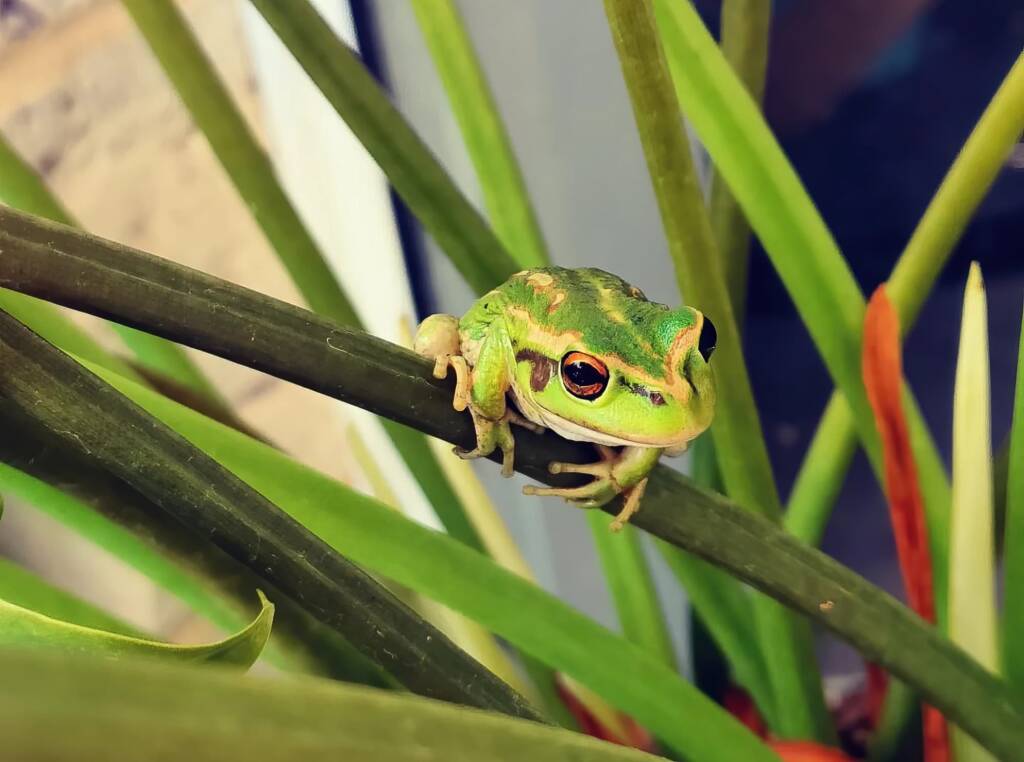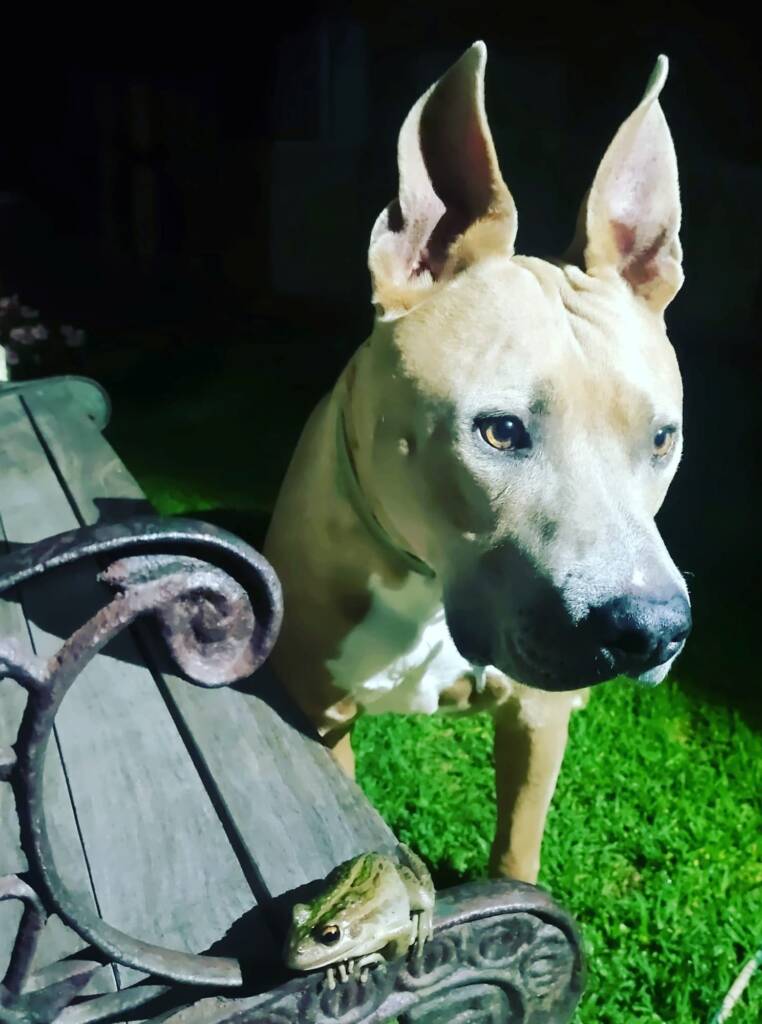FrogsAustralian Green Tree Frog (Ranoidea caerulea) Centralian Tree Frog (Ranoidea gilleni) Desert Tree Frog (Litoria rubella) Desert Trilling Frog Great Barred Frog (Mixophyes fasciolatus) Main’s Frog Long-footed Frog (Cyclorana longipes) Motorbike Frog (Ranoidea moorei) Peron’s Tree Frog Spencer’s Burrowing Frog
The Motorbike Frog (Ranoidea moorei), previously known under Litoria moorei, among other scientific classification, also has a number of common names including Moore’s Frog, the Western Bell Frog, Western Green and Golden Bell Frog, and Western Green Tree Frog. Some of the other names most likely due to the colour variability of the frog.

Place in the genus Ranoidea, subfamily Pelodryadinae (known as Australian treefrogs), the Motorbike Frog has (at time of writing) been reclassified as Ranoidea moorei, although there are many resources that still classify it as Litoria moorei.
The Motorbike Frog has been described under several scientific names (Litoria moorei, Dryosophus moorei, Ranoidea cyclorhyncha and Ranoidea cyclorhyncha cyclorhyncha) by different researchers working in different areas, based on variations in its appearance and colouration. However, genetic research shows these appearance differences are due to local variation. Paul cited other examples where genetic work has clarified earlier nomenclature; Sandhill Frogs found in the Shark Bay area and as far south as Kalbarri, have been identified by the names Arenophyryne rotunda and A. xiphorhyncha, but genetic research has demonstrated they are one species.
Source: The Naturalist News, July 2016, Western Australian Naturalists Club1

Found in the south-west region of Australia, from Geraldton to Albany, it is a large, solid looking frog with relatively long hind limbs. The colour on the back of the frog is extremely variable and can range from green with gold mottling (quite apparent after basking in sunlight) to an almost uniform dark brown (a colour that is most obvious during colder conditions). The belly of the frog is pale green to light brown. The end of the fingers and toes have obvious discs and the toes are partially webbed.2

The common name of Motorbike Frog comes from the mating call of the male, which sounds similar to a motorbike changing up through it gear. The name is derived after John Moore, who was a pioneer of Australian frog studies in the 1950s.
Belonging within a group of ground-dwelling tree frogs, the Motorbike frogs are found in trees. The males are often heard calling from floating vegetation, within reed beds, swamps, lakes, in open areas around dams, and from the branches of trees. They are also found in the urban backyards and garden ponds.
- Scientific classification
- Kingdom: Animalia
- Phylum: Chordata
- Subphylum: Vertebrata
- Class: Amphibia
- Order: Anura
- Family: Pelodryadidae
- Subfamily: Pelodryadinae
- Genus: Ranoidea
- Species: Ranoidea moorei
Footnote & References
- The Naturalist News, July 2016, Western Australian Naturalists Club, http://wanaturalists.org.au/files/2012/08/Nats-News-July-2016-e-version-with-pics.pdf
- Motorbike Frog, Litoria moorei (Copland 1957), Frogwatch, Western Australian Museum, https://museum.wa.gov.au/explore/frogwatch/frogs/motorbike-frog
- Motorbike Frog (Ranoidea moorei), iNaturalistAU, https://inaturalist.ala.org.au/taxa/517096-Ranoidea-moorei
- Motorbike frog, Wikipedia, https://en.wikipedia.org/wiki/Motorbike_frog
- Photographs, Pinjarra WA © Candice Cook
FrogsAustralian Green Tree Frog (Ranoidea caerulea) Centralian Tree Frog (Ranoidea gilleni) Desert Tree Frog (Litoria rubella) Desert Trilling Frog Great Barred Frog (Mixophyes fasciolatus) Main’s Frog Long-footed Frog (Cyclorana longipes) Motorbike Frog (Ranoidea moorei) Peron’s Tree Frog Spencer’s Burrowing Frog








